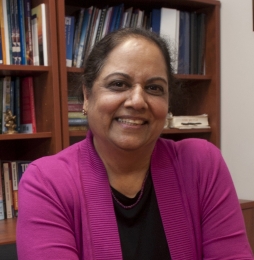Pratibha Varma-Nelson, Ph.D.
Professor, Founding Executive Director of SEIRI

Professor, Founding Executive Director of SEIRI
Dr. Varma-Nelson has done extensive work in bringing Peer Led Team Learning (PLTL), a new approach to how chemistry is taught, to the teaching of chemistry. Dr. Varma-Nelson has done more than just help develop a new approach, she has worked to apply it to the teaching of numerous chemistry courses as well as developing materials to train teachers and peer leaders’ implementation. Dr. Varma-Nelson has been publishing and presenting workshops to college instructors locally, nationally, and internationally. As PLTL has grown in acceptance, Dr. Varma-Nelson has developed research projects to assess its effectiveness for both students and peer leaders. Her current work has moved PLTL into the arena of online courses.
PLTL is an approach to teaching, designed to promote active learning while engaging students in critical thinking. Unlike other teaching approaches, this method involves both the learner and the peer leaders (students who have recently completed the same course). Peer leaders grow through a re-examination of the chemistry concepts in conjunction with their faculty advisor. Questions that engage students in the understanding of chemical concepts are developed during weekly team meetings and then used with students in small groups to help them think critically about the concepts they have learned in class. This approach is not limited to a specific chemistry course. PLTL has now been adopted in a variety of STEM courses, in more than 150 colleges and universities in USA alone.
Dr. Varma-Nelson is also one of the leaders of the Center for Authentic Science Practice in Education (CASPiE) which empowered first and second year chemistry undergraduates by involving them with course-based research. The work on PLTL and CASPiE was funded by the National Science Foundation (NSF).
Her latest research in the use of PLTL in cyberspace looks at the differences between face-to-face and synchronous online PLTL sessions. Her research has revealed more similarities to the benefits of PLTL in these two environments than differences. This work was funded by NSF and Next Generation Learning Challenges (funded by the Bill and Melinda Gates Foundation and the William and Flora Hewlett Foundation).
Dr. Varma-Nelson has also been involved in the development of several influential national reports for AAAS (Describing and Measuring Undergraduate STEM Teaching Practices, 2013) (Vision and Change in Undergraduate Biology Education: A Call to Action, 2011) and (Peer-Led Team Learning: A Student-Faculty Partnership for Transforming the Learning Environment, 2005) among others.